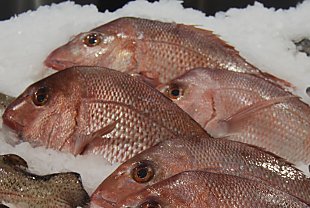Health and Nutrition

Australian Government dietary guidelines recommend one or two fish meals a week. Seafood is typically high in protein and good fat, particularly Omega 3, while being low in kilojoules and very low in saturated fat. It is also generally low in cholesterol, high in vitamins A, B, D & E, as well as high in minerals including iodine and calcium.
Seafood is the best known natural source of Omega 3 fatty acids. Most health experts agree vitamins and minerals, as well as omega 3 are best sourced naturally through foods, rather than taking supplements.
In addition to Omega 3’s positive effects on coronary health, recent research indicates an important role in maintaining good mental health.
Commonly available NSW seafood species containing higher levels of Omega 3 include, sea mullet, Australian bonito, Yellowtail kingfish, silver perch, oysters (both Sydney rock and pacific), broad squid and southern octopus. Species containing moderate levels of omega 3 include snapper, flounder, yellowfin bream, prawns (including eastern king and school) and eastern rock lobster.
Mercury
Mercury occurs naturally in the environment and builds up in the aquatic food chain. Mercury levels in seafood depend on how long the fish lives, its size and what it eats. There has been some concern about mercury in seafood, however the level of mercury in most fish is very low.
Detailed information on recommended intake of fish is available from Food Standards Australia and New Zealand websitE {www.foodstandards.gov.au.
Dioxins
Dioxins are a group of chlorinated compounds produced unintentionally by industrial processes and some natural processes, including bushfires. Dioxins are found in low levels in the normal Australian diet and these low levels present no known health risk. However, at high levels they can be harmful.
In 2005, elevated levels of dioxins were found in a number of species of fish and crustaceans in Sydney Harbour. As a precautionary measure, a total ban was placed on commercial fishing in the Harbour. The source of the elevated dioxin levels is believed to be contaminated sediments in or near Homebush Bay. This is likely due to many years of industrial activities along those waterways. The type of manufacturing facility that was historically located in Homebush Bay, is not believed to be located elsewhere in NSW.

